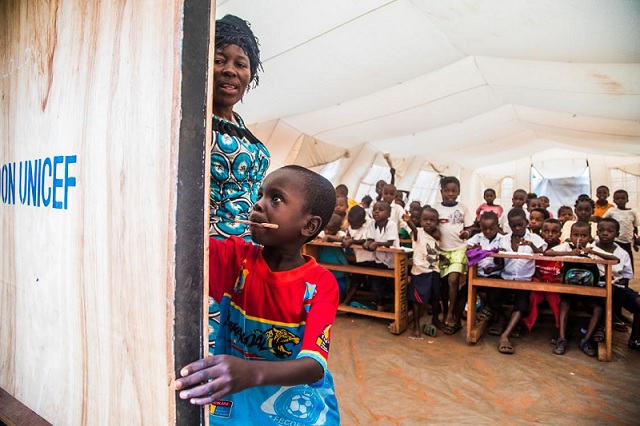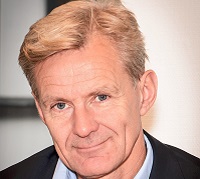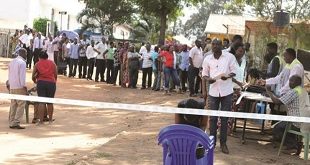
In addition to protecting schools, the trauma violent attacks inflict on children needs fixing
COMMENT | Jan Egeland | It was scorching hot when I arrived at a cramped classroom in the world’s largest refugee camp, in Cox’s Bazar, Bangladesh. But the children I came to meet, a graduating primary school class of Rohingya students, did not mind the heat. Instead, the smiling youngsters proudly told me that they had learned to read and write in Burmese and in English. And then they came over with hand-written letters, all of which contained variations of this one message: “You must help us get an education beyond primary school – we want to be teachers, doctors, and engineers.”
Unfortunately, even the most motivated and talented children in Bangladesh are not guaranteed secondary education. Nor are the children in Myanmar, Colombia, Mali, Somalia, and other conflict zones. Simply put, we lack the resources to meet these children’s needs. All too often, their dreams of getting an education and serving their communities remain just that – dreams.
While there are countless barriers preventing children from having access to the educational opportunities they so badly need, the biggest and most heartbreaking is insufficient funding. Somehow, there is always enough money for World Cups and Super Bowls, Lamborghinis for new billionaires, and numerous regional arms races, but not enough to help children become teachers and nurses.
On a recent visit to Niger, which has the world’s youngest population, I met more displaced children full of dreams. Too many have been forced to drop out of school to support their family or to work, which they see as their only option.
And then there is the rampant violence that permeates the fabric of young lives across Central and West Africa, home to a quarter of the world’s 244 million out-of-school children. Attacks on schools have spiked in eight countries in the region over the past five years, with the number of schools closed due to violent incidents increasing to more than 12,400 during the 2021-22 school year. Across the region, armed groups and soldiers regularly attack and kidnap students and teachers, particularly girls.
While the number of countries endorsing the Safe Schools Declaration has steadily grown over the years, its implementation has slowed. To deliver quality education for all children, the 116 countries that have signed the Declaration must meet their commitments to protect students, teachers, and schools from attacks.
In addition to protecting schools, educators and policymakers must address the deep trauma that violent attacks inflict on children. A study by the Norwegian Refugee Council (NRC) found that almost two-thirds of children in conflict-affected areas in Niger, Burkina Faso, and Mali were unable to concentrate, and 90% had difficulties controlling their emotions. Children who have been affected by violence tend to isolate themselves and fall into patterns of aggression and other antisocial behavior, often causing them to drop out of school.
To help children recover from their traumatic experiences, the NRC provides psychosocial support as part of its education programs in West and Central Africa. We cooperate closely with parents, caregivers, teachers, and counselors to ensure that students are being supported far beyond their time in our classrooms.
While the value of this work is undeniable, it is also chronically underfunded, leaving children without access to education and teachers unable to provide quality learning. In 2022, the average funding for education in this deeply neglected region covered only 18.7% of the minimum requirements; in the Central Sahel region, only 14% of the most basic needs have been met. In the Central African Republic, where 1.5 million children currently need education support, poorly trained parents now make up 81% of the teaching force.
With so many years of learning lost to conflict and displacement, there is an urgent need to enable out-of-school children to return to formal education. For example, in the Central African Republic, the NRC, together with Education Cannot Wait and the European Commission, provides accelerated catch-up programs to children who have dropped out, to help them get back on track and regain a sense of well-being.
Fostering cooperation among policymakers, multilateral agencies, and civil society will be critical. To this end, the first Education Cannot Wait High-Level Financing Conference will convene later this month in Geneva. The conference, co-organised by Education Cannot Wait and the Swiss government, seeks to mobilise resources for critical education programs over the next four years. To provide children in conflict zones with the best chance to succeed, policymakers and educators should embrace three key principles.
First, the donor community must provide flexible long-term funding for education in emergencies. Establishing reliable channels for development funding is crucial for reaching out-of-school children in conflict zones.
Second, we must place the safety and well-being of children, young people, and teachers at the heart of all education-related decisions. By supporting the creation of safe learning environments, we can ensure that every child feels accepted and protected.
Lastly, governments and multilateral institutions must increase access to non-formal education programs for millions of displaced children and adolescents. This represents the best path for out-of-school students to return to formal education.
These are not impossible goals. While they require meaningful and sustained collective efforts, they offer the best hope for millions of schoolchildren looking up to us to help them realize their dreams.
******

Jan Egeland, a former UN under-secretary-general for humanitarian affairs, is Secretary General of the Norwegian Refugee Council and Eminent Person of the Grand Bargain.
Copyright: Project Syndicate, 2023.
 The Independent Uganda: You get the Truth we Pay the Price
The Independent Uganda: You get the Truth we Pay the Price


